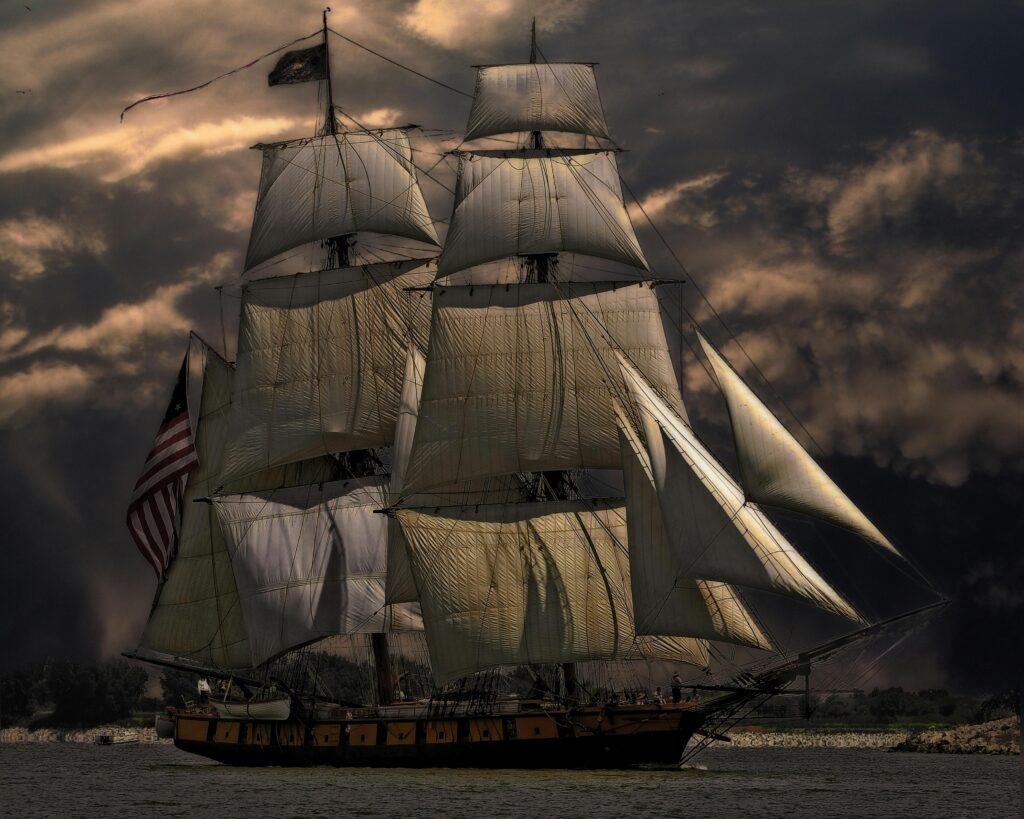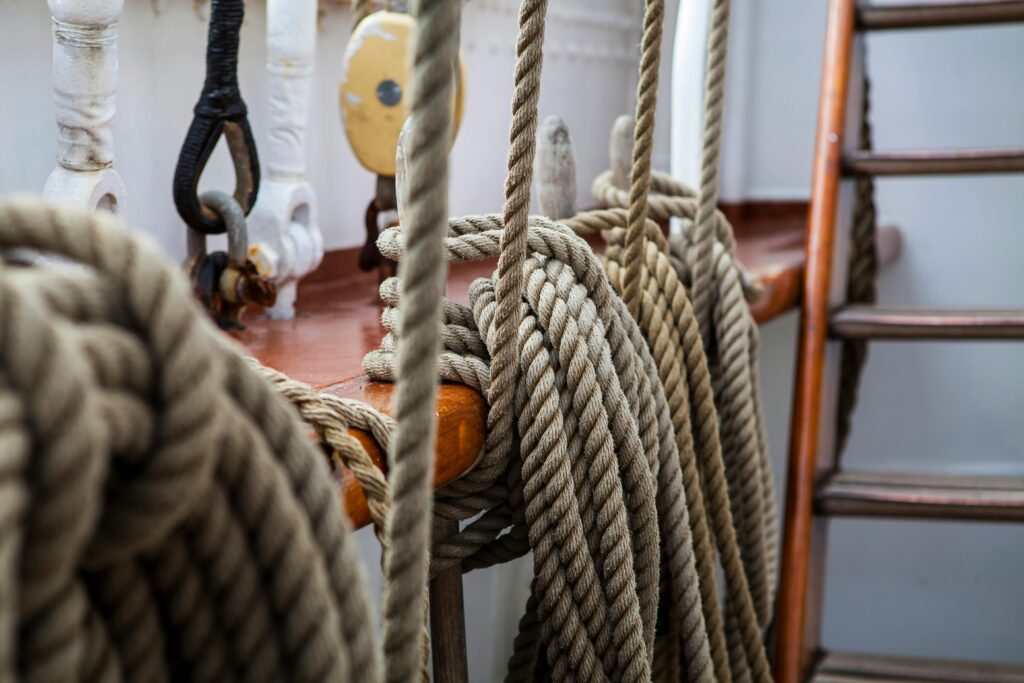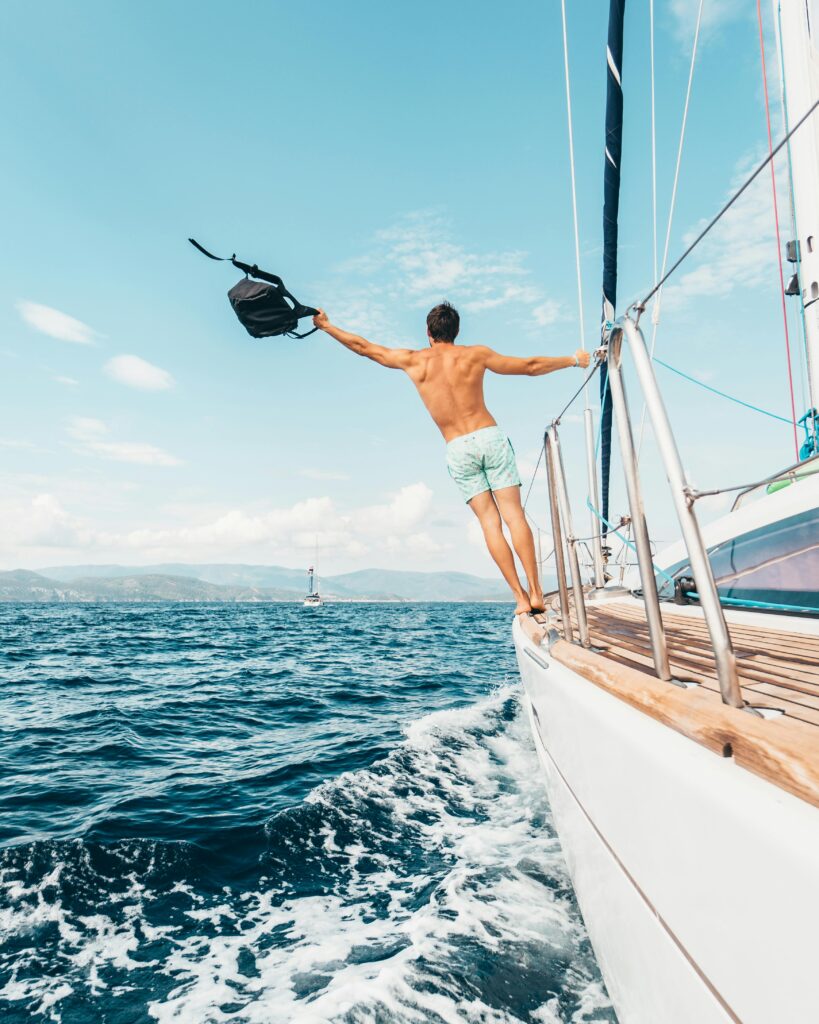Introduction:
Have you ever felt the call of the open sea, a yearning for adventure powered by the wind? Sailing, a timeless pursuit, offers a unique blend of skill, tranquility, and exhilaration unlike any other mode of travel. While modern vessels rely on engines and technology, sailing ships retain a distinct charm and offer a connection to the natural world that is increasingly rare. In this article, we’ll explore the unique characteristics of sailing ships, from their eco-friendly propulsion to their rich maritime heritage, and uncover what makes them so captivating. Prepare to be swept away by the allure of sailing and discover why it continues to capture hearts and imaginations across the globe.

Table of Contents
Harnessing the Power of Wind:
- Eco-friendly propulsion: Sailing ships utilize the renewable energy of the wind, minimizing their carbon footprint and environmental impact. Unlike motor-powered vessels, they produce no air or water pollution, making them a sustainable way to explore the oceans. This reliance on natural forces aligns with a growing global awareness of environmental responsibility and offers a guilt-free way to experience the beauty of our planet.
- Cost-effective long-distance travel: While the initial investment in a sailing vessel can be significant, the operational costs are remarkably low. Wind is free, eliminating the expense of fuel. This makes long-distance travel significantly more affordable, opening up possibilities for extended voyages and exploration without the constant burden of fuel costs.
- Silent operation: The absence of a rumbling engine creates a uniquely peaceful and immersive experience. The only sounds are the gentle lapping of waves against the hull, the wind whispering through the rigging, and the occasional call of seabirds. This tranquility allows for a deeper connection with the marine environment and a sense of serenity that is hard to find elsewhere.
- Independence from fuel supplies: Sailing ships are not bound by the need to refuel, granting them a remarkable degree of freedom and autonomy. They can venture to remote corners of the world, far from the constraints of fuel docks and supply chains, fostering a sense of self-sufficiency and adventure.

Unique Design and Construction:
- Aerodynamic sail shapes: The design and shape of sails are a testament to centuries of refinement, maximizing the capture of wind energy. From the classic triangular sails to the more modern spinnakers and gennakers, each sail type serves a specific purpose, allowing sailors to optimize performance in varying wind conditions.
- Specialized rigging systems: The intricate network of ropes, pulleys, and winches that control the sails is a marvel of engineering. This complex system allows sailors to precisely adjust sail angles and trim, harnessing the wind’s power with remarkable efficiency and control.
- Hull design for optimal performance: Sailing ship hulls are designed to minimize drag and maximize stability, allowing them to glide through the water with grace and efficiency. Different hull shapes are suited to different sailing conditions, from the sleek lines of a racing yacht to the sturdy build of a cruising vessel.
- Lightweight yet durable materials: Modern sailing ships often incorporate advanced materials like fiberglass and carbon fiber, balancing the need for strength and durability with the desire for lightness and speed. These materials allow for greater performance and resilience in challenging conditions.

Skill-Intensive Navigation:
- Reading weather patterns: Sailing requires a deep understanding of weather systems and the ability to anticipate changes in wind direction and strength. This skill is crucial for safe and efficient navigation, allowing sailors to adapt their course and sail trim to changing conditions.
- Mastering sail trimming techniques: Precise sail trim is essential for optimizing performance and maximizing speed. Sailors must constantly adjust sail angles and tension to match the prevailing wind conditions, a skill honed through practice and experience.
- Understanding ocean currents: Ocean currents can significantly impact a sailing vessel’s course and speed. Knowledge of these currents is essential for efficient navigation, allowing sailors to harness favorable currents and avoid adverse ones.
- Celestial navigation: While modern GPS technology is widely used, the art of celestial navigation, using the stars and sun to determine position, remains a valuable skill for sailors, providing a backup system and a connection to traditional seafaring practices.

Versatility in Water Conditions:
- Adaptability to various wind strengths: Sailing ships can perform in a wide range of wind conditions, from gentle breezes to strong gales. Different sail configurations and trimming techniques allow sailors to adapt to varying wind speeds, maximizing performance and maintaining control.
- Ability to sail in shallow waters: Many sailing vessels have shallow drafts, allowing them to access areas inaccessible to larger, deeper-draft motorboats. This opens up opportunities for exploring secluded coves, shallow reefs, and coastal waterways.
- Maneuverability in tight spaces: Sailing ships, particularly smaller ones, can be surprisingly maneuverable in confined spaces. Their ability to sail against the wind and their responsiveness to the helm allow for precise control and navigation in harbors and anchorages.
- Performance in both calm and rough seas: While sailing ships excel in moderate winds, they can also handle both calm and rough sea conditions. In calm conditions, sailors may employ alternative propulsion methods or simply enjoy the tranquility. In rough seas, proper seamanship and sail handling are crucial for maintaining stability and safety.

Connection with Nature:
- Minimal environmental impact: The eco-friendly nature of sailing allows for a close connection with the natural environment without causing harm. Sailors can appreciate the beauty and fragility of the marine ecosystem, fostering a sense of stewardship and responsibility.
- Opportunity for wildlife observation: Sailing offers unique opportunities for observing marine wildlife in their natural habitat. From dolphins playing in the bow wave to whales breaching in the distance, these encounters create unforgettable memories and deepen the connection with the ocean’s inhabitants.
- Experiencing natural rhythms of wind and waves: Sailing immerses one in the natural rhythms of the wind and waves, fostering a sense of connection to the elements and a deeper appreciation for the power and beauty of nature.
Rich Maritime Heritage:
- Historical significance in trade and exploration: Sailing ships played a pivotal role in global trade, exploration, and cultural exchange for centuries. From ancient Polynesian voyages to the age of exploration, sailing vessels have shaped the course of human history.
- Traditional sailing techniques: Many traditional sailing techniques and skills have been passed down through generations, preserving a rich maritime heritage and connecting modern sailors to the seafaring traditions of the past.
- Preservation of nautical culture and skills: The continued practice of sailing helps preserve nautical culture and skills, ensuring that the knowledge and traditions of seafaring are not lost to time.
- Iconic ship designs through the ages: From the majestic clipper ships of the 19th century to the sleek racing yachts of today, sailing ship designs reflect the evolution of maritime technology and aesthetics, showcasing the ingenuity and artistry of shipbuilders throughout history.
Unique Onboard Experience:
- Hands-on participation in sailing: Sailing is an active pursuit, requiring the crew to participate in all aspects of operating the vessel, from hoisting sails and steering to navigating and anchoring. This hands-on involvement creates a deeper connection with the ship and the sea.
- Slower, more immersive travel: Sailing offers a slower pace of travel, allowing for a more immersive and contemplative experience. The journey itself becomes the destination, providing ample time to appreciate the surrounding environment and connect with fellow crew members.
- Intimate connection with the vessel: The close quarters and shared experiences of sailing foster a strong connection between the crew and the vessel itself. The ship becomes more than just a mode of transportation; it becomes a home, a partner in adventure, and a source of pride.
- Sense of adventure and accomplishment: Sailing offers a unique sense of adventure and accomplishment. Successfully navigating a vessel powered solely by the wind, overcoming challenges, and reaching a destination under your own power creates a profound sense of satisfaction and self-reliance.
Conclusion:
Sailing ships offer a unique blend of tradition, adventure, and connection with nature that sets them apart from other forms of travel. From their eco-friendly propulsion and skill-intensive navigation to their rich maritime heritage and unique onboard experience, sailing ships provide a gateway to a world of exploration, self-discovery, and unparalleled connection with the sea. So, hoist the sails, feel the wind in your hair, and embark on an adventure that will stay with you forever.
